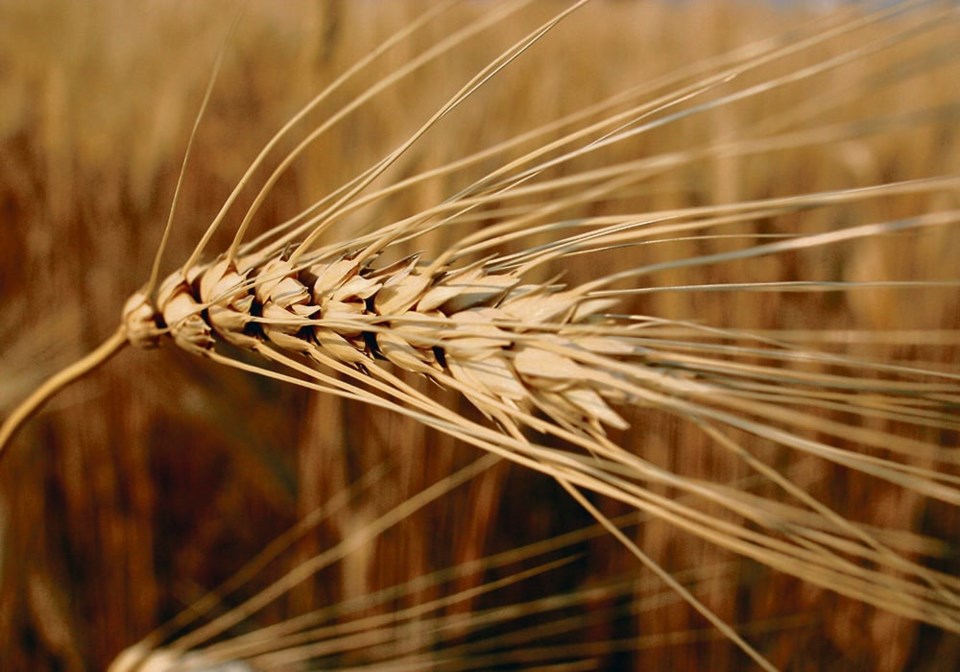WESTERN PRODUCER — Italy is gobbling up Canadian durum faster than dogs slurping up pasta in the Disney film, Lady and the Tramp.
It has bought 1.09 million tonnes of the crop through the first eight months of the 2022-23 crop year, almost quadruple last year’s total volume.
The next biggest buyer is Algeria at 648,400 tonnes.
Leif Carlson, director of market intelligence and trade policy with Cereals Canada, said the world’s biggest pasta exporter chews through a lot of the grain every year.
“They’re always going to need to import durum from outside Italy and from outside the European Union to meet that demand,” he said.
Italy’s durum production dropped last year, while Canada had a big rebound in production, so it was the perfect match.
That is despite Italy’s mandatory country-of-origin labelling (MCOOL) law that has been in place since 2017.
That law, combined with an aggressive smear campaign targeting Canadian durum, has created a topsy-turvy demand environment in Canada’s top market.
“It remains a trade irritant for Canadian exporters and for our durum industry,” said Carlson.
Canadian durum sales to Italy fell 38 percent to 388,138 tonnes in 2017-18, the year following the introduction of the MCOOL legislation. A few years later, sales rebounded to 1.4 million tonnes.
The smear campaign being led by Coldiretti, Italy’s main farm organization, is tarnishing the international reputation of Canadian durum, which Carlson said has excellent colour, protein and gluten properties.
He said Italy’s MCOOL legislation violates EU laws and the Canada-European Union Comprehensive Economic and Trade Agreement.
“Member states shouldn’t be able to implement these sorts of labelling rules,” he said.
But that could soon be a moot point.
The European Commission, the administrative arm of the EU, announced in 2020 plans to extend existing MCOOL laws as part of a broader food labelling initiative associated with its field-to-fork strategy.
Durum and other food products would be added to the list of existing MCOOL products that includes things like honey, fruit and vegetables, fish, beef and beef products, unprocessed meat from pigs, sheep, goats and poultry, olive oil, wine, eggs and spirits.
The commission was initially scheduled to propose a new food labelling scheme by the end of 2022. That was postponed to the second quarter of 2023.
“Our understanding is that process is still underway and that the EU is still looking at that package of proposals,” said Carlson.
“We don’t want to see (Italy’s durum MCOOL) expanded across the EU because it increases costs and is unnecessary.”
Cereals Canada believes that a voluntary labelling scheme is the better way to go.
It is hard to discern what Canadian sales to Italy and other EU countries will be like in 2023-24 because of conflicting reports about carry-in and carry-out supply levels in that region.
Annachiara Saguatti, market analyst with Areté, an Italian agri-food intelligence company, said there are improved conditions for Italy’s 2023-24 crop and France’s crop has very good ratings.
However, Spain’s crop will be half the size of last year because of drought.
He is forecasting a total EU crop of about 7.5 million tonnes, which is in lockstep with the European Commission’s estimate.
However, he differs with the commission on the size of carry-in from the previous year. He believes it will be slightly more than 800,000 tonnes versus the commission’s estimate of 487,000 tonnes.
Saguatti is forecasting total EU imports of 2.1 million tonnes in 2023-24, which is below the commission’s estimate of 2.3 million tonnes.
And he thinks carryout will end up at slightly less than 900,000 tonnes, well above the commission’s number of 172,000 tonnes.
Contact [email protected]

